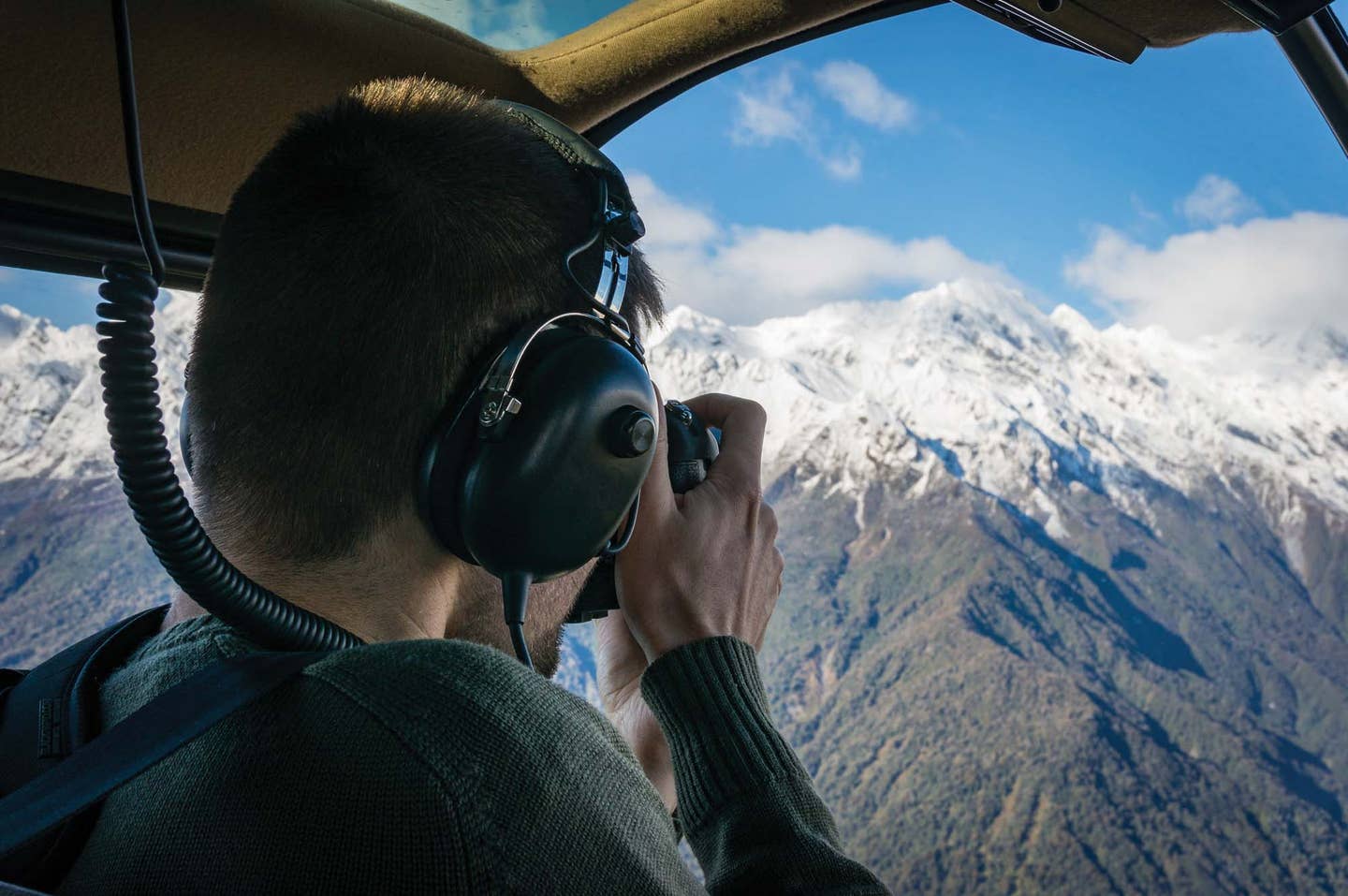Fuel Imbalance
Wing heaviness may be a minor annoyance or a genuine threat to safety
 LEFT-WING HEAVY. A fuel imbalance resulting from icing within the fuel system turned extreme during a March 2009 Pilatus PC-12 accident in Montana. LEFT-WING HEAVY. A fuel imbalance resulting from icing within the fuel system turned extreme during a March 2009 Pilatus PC-12 accident in Montana. |
Most pilots know what it feels like when an airplane is wing heavy because there's more fuel on one side than the other. Corrective action may have included switching the fuel selector from right to left or left to right, adding lateral trim, adjusting your control inputs, or reconfiguring a complex fuel system to balance tank quantities. Many pilots view this aspect of fuel-system management as being so routine that there's nothing that can get you into trouble. A recently completed investigation by the NTSB of an accident in which the pilot and all 13 passengers were killed tells a different story.
The accident occurred on March 22, 2009, at about 2:32 p.m., local time. The single-engine turboprop Pilatus PC-12/45 was diverting to Bert Mooney Airport (BTM), Butte, Mont., when it crashed about 2,100 feet west of runway 33 at BTM. The airplane was owned by a leasing company, and was operating as a personal flight under Part 91. The passengers consisted of three families en route to Bozeman, Mont., for a skiing vacation. Two of the passengers were daughters of a principal of the leasing company. The flight departed Oroville Municipal Airport (OVE), Oroville, Calif., on an IFR flight plan with a destination of Gallatin Field (BZN) in Bozeman. The airplane was operating in visual conditions at the time of the accident.
The day before the accident, the pilot had the airplane fueled with 222 gallons of Jet-A fuel at the municipal airport in Redlands, Calif. (REI), where the airplane was based. The fueling-station manager told investigators that the pilot didn't ask for a fuel system icing inhibitor (FSII) to be added with the fuel. The Safety Board noted that all jet fuels contain trace amounts of water, and an FSII lowers the freezing point to -40º C, to prevent the water from turning into ice crystals, which can block a fuel line or filter. The Pilatus PC-12 Airplane Flight Manual says, "anti-icing additive must be used for all flight operations in ambient temperatures below 0 C." According to the NTSB, most PC-12 flights would require the use of a fuel additive, since on a standard day, 0 degrees C occurs at 7,500 feet.
On the morning of the accident, the pilot flew the PC-12 to the Vacaville, Calif., airport (VCB). Surveillance video showed the pilot fueling the airplane at VCB. The video showed no evidence that the pilot sampled fuel from either of the underwing fuel tank drains or the fuel filter drain to check for water, ice crystals or other contamination. The fuel wasn't premixed with an FSII, and the fuel pump didn't contain provisions for injecting an FSII during fueling.
The airplane departed VCB with nine passengers (four adults and five children), although the flight plan indicated only four passengers. After arrival at Oroville, Calif., four more passengers (two adults and two children) boarded, resulting in a total of 13 passengers (six adults and seven children, who ranged in age from one to nine years). The flight plan indicated eight passengers and the pilot would be on board at that point. The accident airplane was configured with two pilot and eight passenger seats. Because each flight on the day of the accident was a single-pilot operation, one seat in the cockpit could be used by a passenger.
The airplane departed OVE for BZN on an IFR flight plan that showed three hours 30 minutes of fuel on board with an estimated en route time of two hours 30 minutes. Data recovered by investigators revealed that about one hour and 13 minutes into the flight, the left and right fuel-boost pumps began cycling. The airplane had an automatic system in which the fuel-boost pumps would come on to help balance the fuel in the wing tanks and maintain fuel pressure. Investigators believe that fuel pressure was being affected by the buildup of ice on the fuel system.
While the airplane was at FL250 and being handled by the Salt Lake ARTCC, the pilot changed the airplane's route of flight and turned to the left toward his filed alternate of Butte (BTM) without ATC clearance. Then, the pilot asked for a change to BTM but didn't provide a reason for the request. The controller cleared the airplane direct to BTM, and instructed the pilot to maintain FL250.
Radar data showed that the airplane began a descent from FL250. About 25 seconds later, the pilot contacted the controller to request a lower altitude. The controller issued the altimeter setting for BTM, and cleared the airplane to descend to 14,000 feet MSL which was just above the 13,100-foot minimum IFR altitude for the area.
The pilot acknowledged, but then radioed a second request to change destination to BTM. The controller reminded the pilot that he was cleared to BTM, and the pilot responded by stating that the airplane was descending to 14,000 feet. The controller told the pilot to "advise receipt of Butte, Montana, weather and NOTAMs." The pilot responded, "Wilco," but never did report receipt of BTM weather and NOTAMs. When the controller was relieved from his position as part of a normal rotation schedule, he didn't tell the relief controller that the pilot had not reported receipt of weather and NOTAM information for BTM.
The next controller cleared the flight to 13,000 feet. The controller told the pilot to report when he had the airport in sight. The pilot acknowledged. When the pilot requested a lower altitude, the controller cleared him to 12,200 feet, which was the minimum IFR altitude at that point in the approach. The pilot acknowledged.
Radar data showed that the airplane descended below 12,200 feet and continued descending, even though the pilot was supposed to stay at or above 12,200 until he had the airport in sight and could provide his own terrain clearance. Recovered data showed that 2 hours and 17 minutes into the flight, the airplane's warning system provided a caution to the pilot indicating that a low fuel condition existed in the right fuel tank.
The controller advised the pilot that BTM was at 12 o'clock and 12 miles, and asked the pilot whether the airport was in sight. The pilot responded, "Yeah as soon as we get past one more cloud." Then, the pilot reported that he had the airport in sight and canceled IFR. The controller told the pilot to squawk VFR, and that there was no traffic between the airplane and the airport. The pilot didn't acknowledge this transmission, and there was no further contact. Radar data showed that the pilot didn't switch the transponder to the VFR code of 1200. An employee at an FBO heard the pilot radio on Unicom that the airplane would be landing on runway 33.
The airplane impacted the ground about 2,100 feet west of the runway 33 centerline. Witnesses reported the airplane was at a higher altitude than other airplanes that land at the airport. They reported that the airplane had entered a steep left turn at an estimated altitude of 300 feet AGL, and that the nose of the airplane then pitched down suddenly.
The Pilatus Flight Manual instructed pilots to monitor the fuel quantity gauges during normal operation (with the fuel-boost pump switches in the AUTO position) to verify that the fuel was balanced laterally. The AFM stated that the maximum fuel imbalance for the PC-12 was 26.4 gallons or about 178 pounds. If the fuel-balancing system were unable to automatically maintain fuel balance, the pilot could manually operate the fuel pumps.
The investigation concluded that about 1 hour 21 minutes into the flight, the fuel supplied to the airplane's engine was being drawn solely from the right fuel tank by the right fuel-boost pump, and the left-wing-heavy fuel imbalance continued to get worse.
Investigators believe that the pilot most likely recognized that the fuel imbalance wasn't being corrected and, as a result, repositioned the left fuel-boost pump switch from ON to AUTO and the right fuel-boost pump switch from AUTO to ON to observe the effect that the changed switch state would have on the fuel boost pumps' operation. Similar switch-repositioning activities occurred later in the flight, which were attributed to the pilot's attempts to rebalance the lateral fuel load through manual activation of the fuel-boost pumps. Data indicated that the left side wound up with 1,219 pounds more fuel than was on the right side.
To compensate for the fuel imbalance, the pilot was likely using right aileron trim to maintain level flight. It's likely that the pilot had engaged the yaw damper, independent of the autopilot, to counter any yawing and rolling oscillations that the airplane was experiencing.
During examination of the wreckage, the NTSB found the aileron-trim actuator fully extended. This position correlated to full Right Wing Down aileron trim, which would counter a left-roll tendency. The rudder-trim actuator was found fully extended, which correlated to full Nose Left rudder trim. The rudder-trim function of the yaw-damper system had likely trimmed the rudder automatically in the Nose Left direction. The pitch trim was oriented Nose Down, which would have increased the control wheel forces required for the pilot to maintain control of the airplane.
The NTSB determined that the probable cause of this accident was (1) the pilot's failure to ensure that a fuel-system icing inhibitor was added to the fuel before the flights on the day of the accident; (2) his failure to take appropriate remedial actions after a low-fuel-pressure state (resulting from icing within the fuel system) and a lateral fuel imbalance developed, including diverting to a suitable airport before the fuel imbalance became extreme; and (3) a loss of control while the pilot was maneuvering the left-wing-heavy airplane near the approach end of the runway.
Peter Katz is editor and publisher of NTSB Reporter, an independent monthly update on aircraft accident investigations and other news concerning the National Transportation Safety Board. To subscribe, write to: NTSB Reporter, Subscription Dept., P.O. Box 831, White Plains, NY 10602-0831.

Subscribe to Our Newsletter
Get the latest Plane & Pilot Magazine stories delivered directly to your inbox






